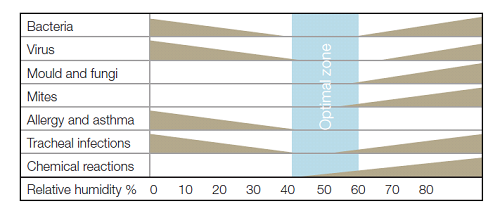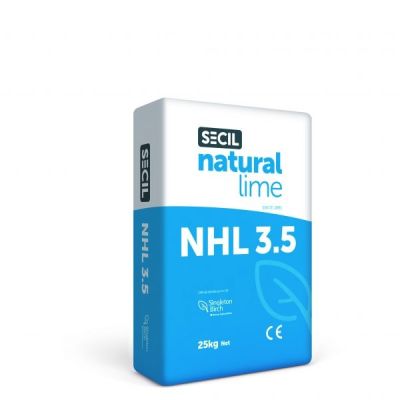Introduction to Lime - Lime - Properties
Tŷ-Mawr Posted this on 10 Jan 2023
Caring for buildings
The importance of lime mortars, plasters and paints in caring for old buildings has now been well documented, this is because they have many desirable properties:
-
Lime prodcuts are vapour permeable and can absorb moisture from surrounding bricks and stones. Any salt or frost damage occurs in the lime, thus protecting the surrounding materials.
-
Lime products are capillary active (they are said to allow buildings to ‘breathe’). This means that moisture can enter the wall but importantly it is then allowed to evaporate from the wall (unlike with most modern mortars and paints which hold moisture in the wall), this helps to naturally control condensation and damp within the building.

Almost one quarter of the UK building stock is of solid wall construction. Care should therefore be taken with the way they are repaired and maintained. These old buildings are beautifully simple to understand and are relatively easy to maintain if the principles are understood (see above). The problem arises when ‘inappropriate’ materials are introduced and they are treated in the way we would treat modern cavity wall construction buildings. Care should be taken NOT to confuse the two technologies.

-
Lime mortars are relatively flexible and will accommodae some movement in a wall, each joint of lime mortar is like a mini expansion joint. If lime cracks, it can ‘self-heal’ when exposed to air unlike its modern counterparts which are harder and hence more brittle.

-
Lime is often seen as a softer and hence ‘weaker’ or ‘less durable’ material but it has a proven track record, it has been used in architecture since 12,000 B.C. and there are plenty of examples from antiquity that still survive today. How many cement buildings will be standing in 600 years time like Brunelleschi’s dome in Florence or closer to home, like Chepstow castle, dating from 1067.
Caring for the environment
Although there is much debate and figures are continually being revamped with advances in technology in both the cement and lime industries, lime is generally considered to be more environmentally-friendly than cement for a number of reasons:
-
Lime is burnt at a lower temperature than cement and so has an immediare energy saving.
-
It is also considered to be more environmentally friendly because of its ability, through carbonation, to re-absorb some of the Carbon Dioxide given off during burning – see the article on The Lime Cycle.
-
Lime mortars allow other building components such as stone, wood and bricks to be recycled because they can be easily cleaned of mortar/limewash and re-used.

-
Lime enables other natural and sustainable products such as wood, hemp, straw etc to be used because of its ability to regulate moisture. A hard, impervious cement render would simply trap moisture within the building and cause it to slowly ‘compost’!
Caring for health
We spend up to 90% of our time indoors – so the quality of the internal environment is important to our health and well-being. Lime is considered to be less harmful to human health than many of its modern counterparts:
-
Lime plaster is hygroscopix (literally means 'water seeking') which draws the moisture from the internal to the external environment, this helps to control condensation and mould growth in the building. The ideal humidity level is between 40-60% – if it is drier than this, or more humid than this, harmful agents are able to live and thrive.
-
Lime plasters and paints are non-toxic, therefore they do not contribute to indoor air pollution unlike many modern paints and are therefore considered to be healthier to live with.
-
Limewash is mildly antiseptic and anti bacterial and was therefore regularly applied to agricultural buildings because of these properties – many farmers still do this prior to lambing to ‘cleanse’ the environment.






